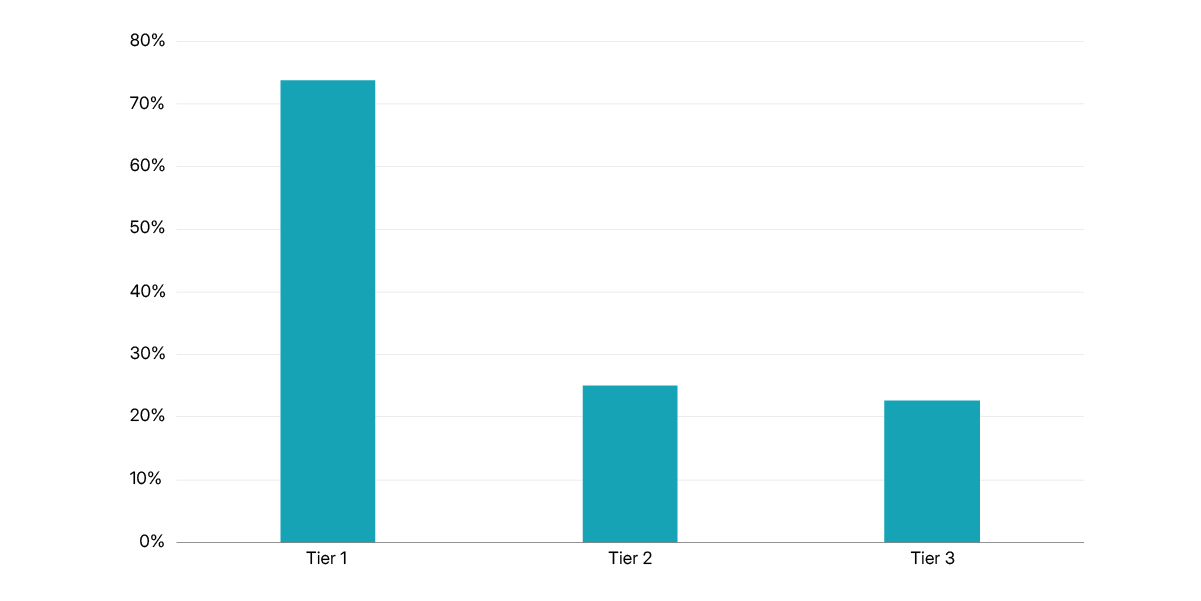Extended Viewer
A Battle on Two Fronts: Rearming and Tariffs
Defense has become a higher priority for investment in the West.1 Europe is now spending record amounts against the backdrop of growing concerns about the technological dependency that relying on one country for supply of military equipment creates.2 For investors aiming to take advantage of greater defense spending, understanding a company’s supply chain is crucial, though not always easy, as the supply chain of the aerospace and defense (A&D) industry is particularly intricate and globalized.
Consider the different direct suppliers (Tier 1) needed to build Lockheed Martin’s F-35 aircraft: Rolls-Royce, MBDA, BAE Systems, BKN Aerospace, Leonardo, GKN Aerospace Norway and Terma. They all use parts from their own suppliers (Tier 2) around the world. While some parts are so specialized that they come from a single factory, and therefore are easily tracked, defense companies have less and less oversight over their supply chain as some elements become less specialized, such as those from raw material suppliers (Tier 3).3
Supply chains in the spotlight
New U.S. tariffs have highlighted the intricacies and complications of a global supply chain, and although many tariffs were paused for 90 days as of April 9, the anticipation of looming costs was enough to send industry players scrambling to assess their exposure. One parts supplier, Howmet, declared a force majeure event to avoid having to adhere to contracts affected by the tariffs.4 Ultimately, investors’ confidence in whether A&D companies are prepared for further supply-chain disruptions could depend on the oversight that these companies have over their multi-tiered suppliers.
Oversight by A&D companies of their suppliers

1 “EU Defense Spending,” New York Times, March 4, 2025.
2 “Will Lockheed’s F-35 become a casualty of Donald Trump?” Financial Times, March 27, 2025.
3 “Boeing Seeks Plan B After Fire Destroys Key Suppliers’ Plant,” Wall Street Journal, April 9, 2025.
4 “Aerospace Firms Scour Contracts Over Tariffs After Supplier Challenge,” Reuters, April 7, 2025.
Navigating Uncertainty: Tariff Implications
What global shifts mean for decision-makers.
Explore moreSocial Risks and Opportunities for Corporates: Long-Term Performance in Global Equity Markets
What goes into an analysis of financially material social risks and opportunities? And what does it mean for a company’s market performance? Our analysis found that scoring on social-risk themes was a key indicator of performance.
Learn moreMapped or Missed? Navigating Tariff Uncertainty
Traceable supply chains can offer clarity amid trade-policy volatility, aiding businesses in forecasting costs, navigating tariffs and reducing investor risk.
Read more